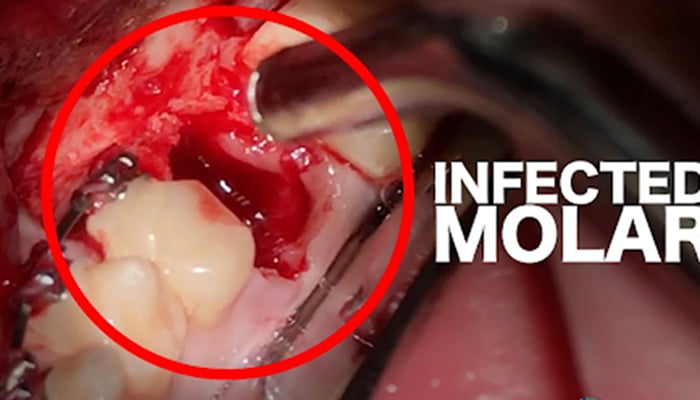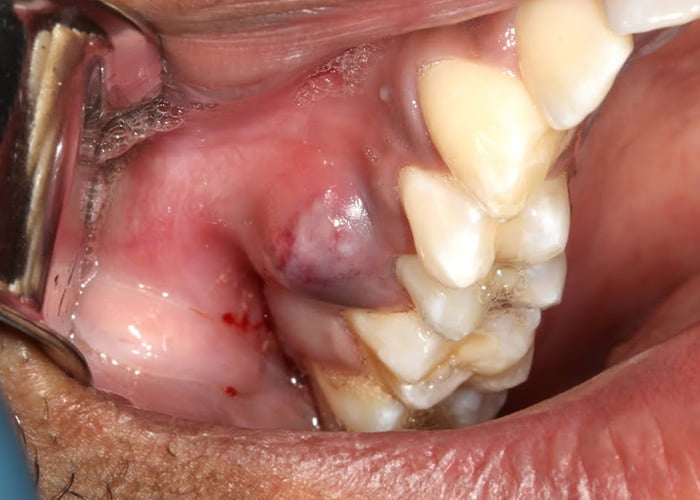Typically, tooth extraction is a short, less intrusive surgery. With careful post-extraction treatment, the majority of patients experience minimal side effects and a speedy recovery. Dentists take great care to reduce the possibility of an infection tooth extraction following a procedure. Still, infections occasionally occur, just as they can following any other form of surgery.
Fortunately, the likelihood of infection is quite low, but it is useful to be on the lookout for any signs that might necessitate additional action. Here are some important things to know about developing an infected tooth extraction and what to do if one does.
How does the infection after a tooth extraction start?
An infected tooth extraction begins when bacteria enter the spaces where the teeth used to be. Infection begins as soon as the bacteria enter the blood. All dental patients need to follow the dentist’s post-operative instructions very carefully to avoid infection. Maintaining a debris-free area is essential to prevent future infections. When the wisdom tooth is removed from the jawbone, it leaves a large gap and an open scar. Bacteria can easily enter from there, leading to the risk of infection.
There are several common causes of an infected tooth extraction:
- The working environment is not fully sanitized. Dental and surgical instruments are not sterile. This allows bacteria to grow and spread, causing pus inflammation and swelling.
- Doctors extracted teeth improperly and treated wounds poorly. It causes a lot of problems during and after the extraction process.
- In addition, the patient’s oral hygiene following teeth is poor. Eat while allowing food to fall into the empty socket. Or by not cleaning teeth correctly, which allows dangerous bacteria to grow.
- One of the most common reasons for post-extraction infections is smoking immediately after tooth extraction. Not only does smoking make it harder for your body to fight infections, but it can also easily loosen blood clots that are about to form.
Signs of infection after extraction
After a tooth is extracted, it is normal for the area to remain red and swollen for up to 48 hours. Minor bleeding is also normal and usually stops within 8 hours after the procedure. Here are some signs of sinus infection after tooth extraction you may have:
- Swelling persists: Swelling and redness are common after a tooth extraction, but if it persists for more than 24 hours, see your dentist.
- Pus discharge: A yellow or white pus leaking from or around the mouth opening may indicate an infection.
- Occurrence of fever: Fever is an indicator of a variety of health problems, but if it occurs after a tooth extraction, it could be due to the development of an infection.
- Persistent pain: You may experience some pain after the extraction, but it will subside within a day or two. If it lasts longer or increases in intensity, you may have a problem.
- Bleeding: After tooth extraction, there may be a small amount of bleeding. You should contact her dentist if this bleeding continues for more than 24 hours.
Read more: How To Stop Bleeding After Tooth Extraction?
- Strange taste in mouth: Following extraction, you could first have an unpleasant taste in your mouth. If the bad taste persists or becomes bitter or pungent, it may be an infection.
- Persistent bad breath: If bad breath persists after you use toothpaste and mouthwash, or if your mouth smells bad, an infection may be the cause.
- New discomfort in the extraction area: If pain returns after the initial discomfort has subsided, an infection can take hold.
Pictures of infected tooth extraction
If you cannot imagine what an infected tooth extraction will be like. We will provide you with a tooth extraction infection pictures.

How long after a tooth extraction can infection set in?
An infected tooth extraction frequently starts within 1-2 days of the extraction, however, it can also appear much later. It’s possible that symptoms of infection won’t appear for 3–4 weeks after the procedure.
How can I prevent infection after tooth extraction?
By following post-extraction care instructions provided by your dentist, you can decrease the chances of inflammation and infection occurring. These directions may include:
- You may be instructed to rinse your mouth regularly with warm salt water to reduce discomfort.
- Cold compresses can help relieve increased pain and swelling.
- Restrictions on food and drink intake. Continue to closely monitor your food and fluid intake to avoid further aggravating the infection.
- Take all prescribed antibiotics, even if the infection seems to have cleared up. Even if you feel better, you may still have an infection.
- Use of prescribed antiseptic mouthwash. Rinse your mouth with warm salt water regularly to reduce discomfort.
- Avoid overly strenuous activity for the first 24 hours.
- Keep the suction area clean. Avoid smoking and other tobacco use.
How should I treat a tooth extraction infection?
It’s essential to know that the infection will not go away or cure itself. You’ll need additional care, which may include any of the following and you will know how to treat infected tooth extraction site:
- Given antibiotics in addition
- Methods your dentist uses to discharge an infection
- Salinity rinses
- Applying cold compresses to reduce pain or swelling
- Limiting what you can eat and drink to prevent spreading the virus
- Seeking your dentist’s assistance is the first step to treating the infection and restoring a healthy mouth because a lot will depend on the infection itself. tooth extraction
Much will depend on the infection itself, so seeking help from your dentist is the first step to alleviating it and regaining a healthy mouth.
Contact Dentist for Life Dentistry Today!
Contact Dentists in Marysville Ohio as soon as you can if you have any of the aforementioned symptoms or suspect an infection following a tooth extraction. If an infection is there, our doctor will determine how to treat it effectively and get rid of any symptoms you may be having.



